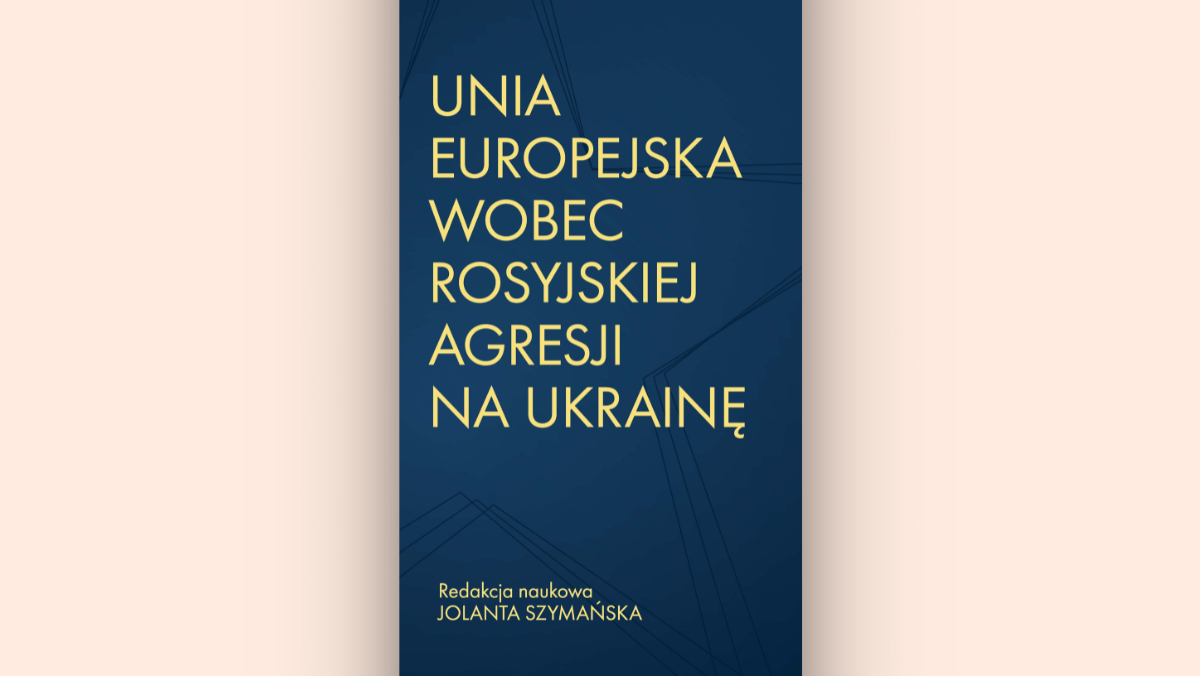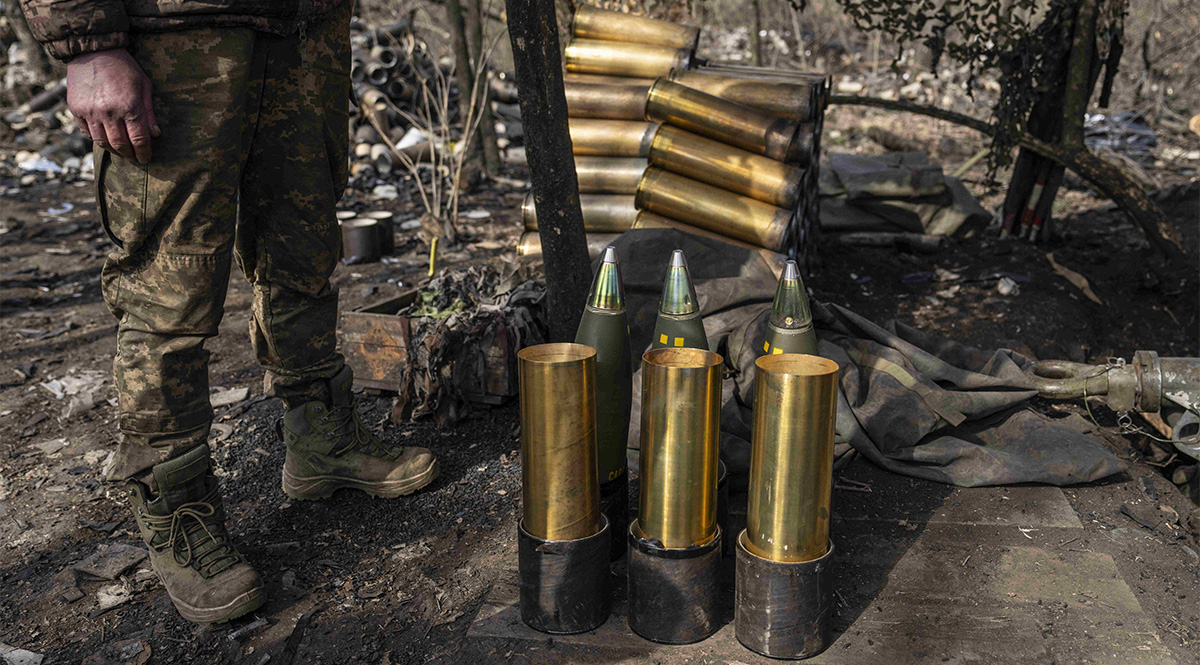EU Strategic Agenda: Defending the Community's Values and Status
At the end of June, the European Council adopted the Strategic Agenda, setting out common objectives and courses of action for the next five years. Influenced by the experience of the Russian aggression against Ukraine and the COVID-19 pandemic, the importance of military and economic security issues has increased. Implementation of the agenda will be hampered by the reluctance of some countries to increase spending and by disagreements over how to achieve some of the objectives, including military assistance to Ukraine.
(1).png) Johanna Geron / Reuters / Forum
Johanna Geron / Reuters / Forum
The Record of Recent Years
The pandemic and Russia’s full-scale aggression against Ukraine exposed both the economic dependence of the EU on authoritarian states and the poor condition of the members’ defence capabilities. In response, the Union took unprecedented action. The Next Generation EU (NGEU) recovery fund was created through the issuance of Eurobonds. EU funds from the European Peace Facility (EPF) financed some military equipment and ammunition for Ukraine. Cybersecurity and cyberdefence strategies have been successfully adopted, and the fight against disinformation intensified.
However, some of the instruments created in response to these external and internal crises are not comprehensive. States have agreed to establish new sources of revenue to repay the NGEU, but have not reached final agreement on this issue. The conditionality mechanism allows for disciplining more effectively Member States that breach EU values, but only if these violations have an impact on the Community budget. The political and economic upheaval has also prevented the Union from full completion of some of the objectives set five years ago, such as the creation of a capital markets union, the dismantling of barriers in the single market, comprehensive reform of migration and asylum policy, the development of industrial policy (including the strengthening and consolidation of the defence sector), as well as the introduction of more sustainable solutions in agriculture.
Evolution of EU Priorities
The objectives of the new agenda are similar to those adopted five years ago but with noticeable changes in their hierarchy. As before, it emphasises the importance of shared values and the desire to protect the rule of law. The Union’s aim to strengthen its position in a world dominated by a great powers rivalry is elevated in the goal of becoming a “strategic global player”.
Russia’s full-scale war in Ukraine is seen as an attack on a free and democratic Europe. The agenda therefore emphasises increased investment in the European arms industry and coordinated procurement, while reducing dependence on foreign partners. It also stresses the need to increase the interoperability of the armed forces in Europe and reaffirms the complementary nature of EU action vis-à-vis NATO. In view of the growing scale of hybrid threats, it projects further deepening of cooperation in the digital and information domain, while signalling new challenges related to the need to protect critical infrastructure and build societal resilience.
Current priorities also point to the agreement of Member States on EU enlargement to include the countries of the Eastern Neighbourhood and the Western Balkans, which the agenda describes as an “investment in peace, security, stability and prosperity”. On the other hand, it repeats the list of challenges related to irregular flows of people, as the pact adopted in May this year is only the beginning of the reform of the EU’s migration and asylum system. However, the updated agenda shifts the focus to tackling the root causes of migration in the countries of origin and improving returns, and it announces more innovative measures to ensure legal migration pathways.
The Union wants to boost its global position also by improving competitiveness and economic potential. The agenda announces efforts to strengthen the Union’s industrial and technological competence and to continue the reduction of harmful economic dependencies (derisking). The EU will remain an open economy but will defend itself against unfair competition. Heads of state and government reaffirmed the objectives of the previous agenda to deepen the internal market and to maintain rules that guarantee fair competition. As controversies over the green transition have grown in recent months, the agenda proclaims a more pragmatic approach to the project and a strengthened concern to preserve the competitiveness of the EU economy.
Internal and External Challenges
Russia’s protracted war against Ukraine highlights the need for further increases in defence spending, but there is no consensus within the Union on how to proceed. Some countries, including Estonia, Poland, and Czechia, stress the need for further urgent military assistance to Ukraine and advocate buying on the world market, given the shortages of equipment and ammunition in Europe. Countries with a strong arms industry, including France, Germany, and Italy, on the other hand, emphasise the financing of European companies, which in the medium term will eliminate stock shortages and increase supplies to Ukraine. In this context, it is important to secure long-term funding, both for ongoing assistance from the EPF and for an increase in the EU budget for the defence industry.
Achieving the EU’s ambitions to boost industry (including defence) and to guarantee a fair climate transition will require additional resources. Yet, the majority of net payers rejects calls for an increase in the EU budget or more common debt. Unless another NGEU-like fund is created to support the modernisation of members’ economies, not only will the ambition to increase investments but also the balance of the single market be at risk. The countries that recently generously subsidised their national companies—mainly Germany and France—will lobby for maintaining relatively lax state aid rules.
There are growing differences over the scope and pace of the green transition. In the second half of the European Commission’s mandate, the centre-right has distanced itself from some of the Commission's ventures, particularly those relating to the protection of environmental resources, arguing that they impose too high a cost on business. The desirability of reducing economic ties with third countries is also controversial. EU members whose economies are heavily dependent on exports, and parts of the business lobby, are urging a cautious approach in this area, fearing the reaction of trading partners, notably China. Requirements for third countries on environmental standards, labour rights and state aid, and the associated level of protection for the EU market, are a source of contention between the right and the left. Discussions on institutional reform of the Union in the context of enlargement have stalled.
Conclusions and Prospects
The level of correspondence between the new Strategic Agenda and the one from five years ago shows that the Union is consistently developing instruments to effectively defend its interests in the world. An acceleration of these activities and an increase in the importance of security initiatives have been necessitated by Russia’s aggressive actions. We can therefore expect the EU to continue military assistance to Ukraine and increase investment in its own defence sector, as well as to conduct a more active policy to stabilise the situation in its immediate neighbourhood. Action in the economic dimension will focus on trying to increase public and private investment, while maintaining a balance between reducing dependencies, stimulating growth, and building a zero-carbon economy.
However, behind the general agreement on the objectives, there are differences of opinion both on their hierarchy and on how to achieve them. It is highly likely that political changes in the Member States, and the growing support for political forces that question closer integration, will deepen polarisation and make it more difficult to find compromises. In turn, the possible victory of Donald Trump in the upcoming U.S. presidential elections may complicate transatlantic cooperation, including on the issue of support for Ukraine.
In these circumstances, Poland can have a constructive influence in the EU by putting forward proposals for reforms of common policies, the budget, and decision-making processes that will strengthen the Union in its competition with authoritarian powers and allow for the rapid accession of new members. It should also be prepared to act as part of coalitions of the willing, which may be essential if internal disputes lead to deadlock in certain areas, such as military aid to Ukraine or the protection of the Union’s eastern border.
The Record of Recent Years
The pandemic and Russia’s full-scale aggression against Ukraine exposed both the economic dependence of the EU on authoritarian states and the poor condition of the members’ defence capabilities. In response, the Union took unprecedented action. The Next Generation EU (NGEU) recovery fund was created through the issuance of Eurobonds. EU funds from the European Peace Facility (EPF) financed some military equipment and ammunition for Ukraine. Cybersecurity and cyberdefence strategies have been successfully adopted, and the fight against disinformation intensified.
However, some of the instruments created in response to these external and internal crises are not comprehensive. States have agreed to establish new sources of revenue to repay the NGEU, but have not reached final agreement on this issue. The conditionality mechanism allows for disciplining more effectively Member States that breach EU values, but only if these violations have an impact on the Community budget. The political and economic upheaval has also prevented the Union from full completion of some of the objectives set five years ago, such as the creation of a capital markets union, the dismantling of barriers in the single market, comprehensive reform of migration and asylum policy, the development of industrial policy (including the strengthening and consolidation of the defence sector), as well as the introduction of more sustainable solutions in agriculture.
Evolution of EU Priorities
The objectives of the new agenda are similar to those adopted five years ago but with noticeable changes in their hierarchy. As before, it emphasises the importance of shared values and the desire to protect the rule of law. The Union’s aim to strengthen its position in a world dominated by a great powers rivalry is elevated in the goal of becoming a “strategic global player”.
Russia’s full-scale war in Ukraine is seen as an attack on a free and democratic Europe. The agenda therefore emphasises increased investment in the European arms industry and coordinated procurement, while reducing dependence on foreign partners. It also stresses the need to increase the interoperability of the armed forces in Europe and reaffirms the complementary nature of EU action vis-à-vis NATO. In view of the growing scale of hybrid threats, it projects further deepening of cooperation in the digital and information domain, while signalling new challenges related to the need to protect critical infrastructure and build societal resilience.
Current priorities also point to the agreement of Member States on EU enlargement to include the countries of the Eastern Neighbourhood and the Western Balkans, which the agenda describes as an “investment in peace, security, stability and prosperity”. On the other hand, it repeats the list of challenges related to irregular flows of people, as the pact adopted in May this year is only the beginning of the reform of the EU’s migration and asylum system. However, the updated agenda shifts the focus to tackling the root causes of migration in the countries of origin and improving returns, and it announces more innovative measures to ensure legal migration pathways.
The Union wants to boost its global position also by improving competitiveness and economic potential. The agenda announces efforts to strengthen the Union’s industrial and technological competence and to continue the reduction of harmful economic dependencies (derisking). The EU will remain an open economy but will defend itself against unfair competition. Heads of state and government reaffirmed the objectives of the previous agenda to deepen the internal market and to maintain rules that guarantee fair competition. As controversies over the green transition have grown in recent months, the agenda proclaims a more pragmatic approach to the project and a strengthened concern to preserve the competitiveness of the EU economy.
Internal and External Challenges
Russia’s protracted war against Ukraine highlights the need for further increases in defence spending, but there is no consensus within the Union on how to proceed. Some countries, including Estonia, Poland, and Czechia, stress the need for further urgent military assistance to Ukraine and advocate buying on the world market, given the shortages of equipment and ammunition in Europe. Countries with a strong arms industry, including France, Germany, and Italy, on the other hand, emphasise the financing of European companies, which in the medium term will eliminate stock shortages and increase supplies to Ukraine. In this context, it is important to secure long-term funding, both for ongoing assistance from the EPF and for an increase in the EU budget for the defence industry.
Achieving the EU’s ambitions to boost industry (including defence) and to guarantee a fair climate transition will require additional resources. Yet, the majority of net payers rejects calls for an increase in the EU budget or more common debt. Unless another NGEU-like fund is created to support the modernisation of members’ economies, not only will the ambition to increase investments but also the balance of the single market be at risk. The countries that recently generously subsidised their national companies—mainly Germany and France—will lobby for maintaining relatively lax state aid rules.
There are growing differences over the scope and pace of the green transition. In the second half of the European Commission’s mandate, the centre-right has distanced itself from some of the Commission's ventures, particularly those relating to the protection of environmental resources, arguing that they impose too high a cost on business. The desirability of reducing economic ties with third countries is also controversial. EU members whose economies are heavily dependent on exports, and parts of the business lobby, are urging a cautious approach in this area, fearing the reaction of trading partners, notably China. Requirements for third countries on environmental standards, labour rights and state aid, and the associated level of protection for the EU market, are a source of contention between the right and the left. Discussions on institutional reform of the Union in the context of enlargement have stalled.
Conclusions and Prospects
The level of correspondence between the new Strategic Agenda and the one from five years ago shows that the Union is consistently developing instruments to effectively defend its interests in the world. An acceleration of these activities and an increase in the importance of security initiatives have been necessitated by Russia’s aggressive actions. We can therefore expect the EU to continue military assistance to Ukraine and increase investment in its own defence sector, as well as to conduct a more active policy to stabilise the situation in its immediate neighbourhood. Action in the economic dimension will focus on trying to increase public and private investment, while maintaining a balance between reducing dependencies, stimulating growth, and building a zero-carbon economy.
However, behind the general agreement on the objectives, there are differences of opinion both on their hierarchy and on how to achieve them. It is highly likely that political changes in the Member States, and the growing support for political forces that question closer integration, will deepen polarisation and make it more difficult to find compromises. In turn, the possible victory of Donald Trump in the upcoming U.S. presidential elections may complicate transatlantic cooperation, including on the issue of support for Ukraine.
In these circumstances, Poland can have a constructive influence in the EU by putting forward proposals for reforms of common policies, the budget, and decision-making processes that will strengthen the Union in its competition with authoritarian powers and allow for the rapid accession of new members. It should also be prepared to act as part of coalitions of the willing, which may be essential if internal disputes lead to deadlock in certain areas, such as military aid to Ukraine or the protection of the Union’s eastern border.






